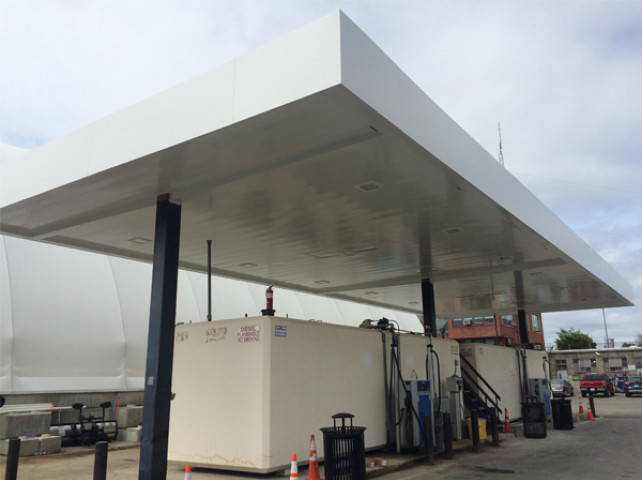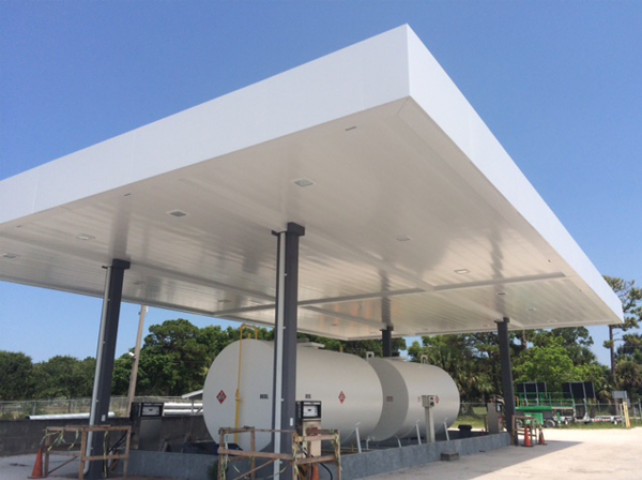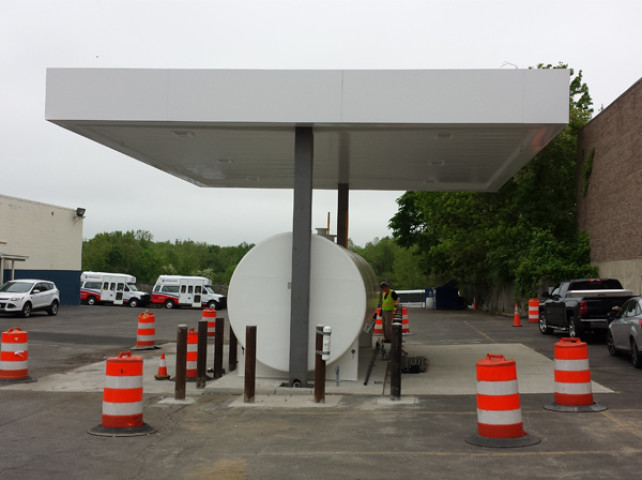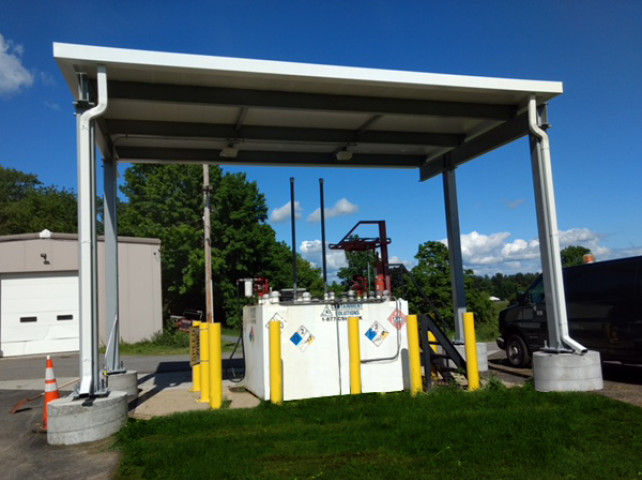Canopies For Covering Aboveground Tanks
11
July, 2018
Why should I go to the extra time/expense of covering my aboveground tank?
If you have an aboveground Storage Tank you already know that the Spill Prevention Control & Countermeasures (SPCC) regulations require owners or operators of certain aboveground oil storage facilities to comply with site-specific spill prevention plans. Note that State AST regulations may be even more stringent from the Federal requirements.
So what does this have to do with covering your containment area and/or tank with a steel canopy?
- Most storage tanks contain petroleum products
- Covering tanks eliminate most rainwater concerns
- Seepage from a storage tank can easily contaminate water
- Product discharged from a tank could potentially accumulate in soil or be carried away with excess stormwater
- A pint of oil released into the water can cover 1 acre of water surface
- A spill of only 1 gallon of oil can contaminate a million gallons of water
- Reduces fuel loss due to evaporation
Managing rainwater that falls into containment structures presents a difficult & costly challenge.
Standing water in a tank containment unit decreases the amount of fuel the structure could hold if a spill did happen. Clean water can be released into the environment, but contaminated water cannot. If an oily sheen exists on the surface of the contained water this is an indication of fuel in the unit. Separation of the fluid in the unit is necessary before the water can be drained out. This cost the owner time & money to address every time water accumulates.
Reducing evaporation/fuel loss by installing a cover over your tank is another economic and air quality preventative measure. A canopy covering a 10,000-gallon tank can conserve 600 to 1,000 gallons of gasoline per year that would escape by evaporation without the tank being covered.
User coverage is another reason that many look to cover at least a section of the tank/pumps. With locations having a high volume of usages such as bulk fueling facilities, bus fueling, and DPW’s this provides the drivers an area to be covered out of the elements.
Our canopy designs can meet your individual site requirements:
- Allow for full tank coverage along with driver lane coverage if desired.
- The canopy can be offset- meaning that one overhang on the width is longer than the other so minimal coverage is provided for the tank location, but coverage is available for the fueling area & drive lane adjacent.
- Accommodations for fuel loading racks
- Accommodations for safety handrails
- Include support beams to connect your fall protection equipment
How best to assist you
Having a rough layout of tank/pump placement, traffic bollards and lane placement will best ensure we can assist with recommending a canopy to suit your needs. If a tank containment unit/dyke wall is being designed we can provide column reactions for the containment unit engineer to incorporate into the design wall. The canopy columns can also be designed with independent foundations outside of the containment area.
To obtain further information please call us Today 800-211-6534 or complete the Quote it Now form on our website.
References:
FedCenter - Aboveground Storage Tanks (ASTs). (2017, July 6). Retrieved from https://www.fedcenter.gov/assistance/facilitytour/tanks/aboveground/
Managing Above Ground Storage Tanks to Prevent Contamination of Drinking Water. (2010, August). Retrieved from https://www.epa.gov/safewater





Leave A Comment